Choosing and using electric toothbrushes

In the market for oral care tools, electric toothbrushes have long and firmly held the leading position. In our review, we will talk about how such brushes are arranged, we will tell you how they are useful and how they are harmful.


Features, pros and cons
First, a little history. The very first developments on the creation of an electric toothbrush appeared in the pre-war years, but the difficult situation in the world did not allow us to tackle this issue closely. Only in 1954, the inventor Philippe-Guy Voogh from Sweden managed to create and introduce into mass production the first model of the brand Broxo... This toothbrush was designed for people with disabilities, it was quite bulky and needed a constant AC connection.
Since then, the capabilities of hygiene products have been repeatedly modernized and improved, mechanical, rotary brushes, silent models with a rotating head and many other devices have appeared.
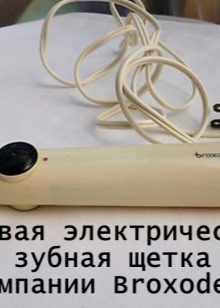


A modern electric toothbrush is a functional hygiene device for daily care of hard and soft tissues of the oral cavity. The movements of the cleaning head are carried out due to the supply of current - it is supplied by batteries or a rechargeable battery. The device has the following functionality:
- elimination of plaque on the teeth;
- polishing the surface of the teeth;
- gum massage;
- cleansing the surface of the tongue.
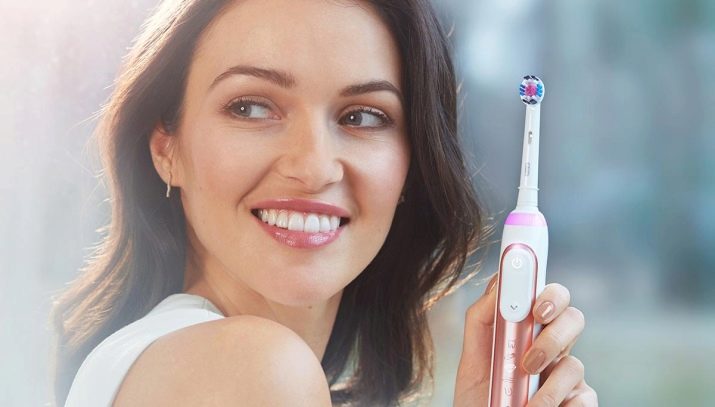
This device gained massive popularity due to ergonomics, versatility, ease of use and improved cleaning efficiency. The result of the oral cavity treatment meets all professional cleaning standards produced within the framework of dental clinics. Due to the translational movement of the rigid bristles, dental plaque is eliminated, tartar is reduced, food debris is cleaned from the interdental space, and pathogenic bacteria are neutralized. Regular use of the electric brush allows you to lighten the enamel by 2-3 tones.


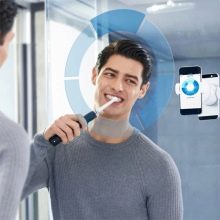
However, along with the obvious advantages, electric brushes have their own disadvantages. The main one is considered to be high cost. - the price of such products is dozens of times higher than the price of a traditional instrument for treating the oral cavity.
It is very difficult to choose the right toothbrush without consulting a treating dentist, it is not uncommon for the user to hold the handle uncomfortable or the size of the cleaning head is not suitable. If the latter was chosen incorrectly, it will not give a high-quality cleaning, while such equipment is not replaced in pharmacies.
Other disadvantages include:
- the need to constantly charge the battery or purchase new batteries;
- additional costs due to the need to purchase replacement attachments.

Important: there are contraindications to the use of an electric toothbrush:
- acute inflammatory processes in the oral cavity;
- increased abrasion of tooth enamel;
- bleeding gums for two or more weeks;
- white spots or wedge-shaped defects on the enamel.
The use of an electric toothbrush is not recommended for people with dentures, implants and crowns. Under the influence of vibration, their discharge can begin.
You should also first consult with your doctor about the advisability of such treatment for expectant mothers and people with problems with the cardiovascular system.


Views
The classification of electric brushes for teeth and mouth includes several types of devices.
Conventional
An electric motor is built into the body of a conventional electric brush. It activates two types of movements.
- Reciprocating-rotational - the villi move in a circle. In this case, it is necessary to transfer the device from tooth to tooth and clean each of them separately.
- Up down - movements are similar to those performed when brushing your teeth with a traditional brush.


Ionic
Not so long ago, wireless ionic devices appeared on the market, they are powered by batteries or from the energy of the sun. The power supply is directly connected to the titanium dioxide plate. When activated, it forms a flow of negatively charged ions. Despite such a complex structure, this brush looks absolutely ordinary.
The advantages of the ionic device are obvious.
- When using a similar brush the acidity of the oral cavity returns to normal much fasterthan with traditional models.
- When ions form, electrons are released in parallel. They contribute to the maximum penetration of the toothpaste into the dental tissue, and thus, under the action of ions, crystalline formations begin to break down, therefore the ion brush prevents the appearance of tartar.


At the same time, doctors are skeptical about the claimed anti-inflammatory effect of ionic devices.
The usefulness of this device concerns only short therapeutic courses; prolonged use is fraught with a deterioration in the condition of the oral cavity organs.
The use of an ionic toothbrush has a number of serious contraindications. It is not recommended for smokers. The fact is that nicotine already has a pathological effect on the oral mucosa. With regular exposure to ions, which also affect the mucous membrane, the risk of inflammatory processes increases to a large extent.

Sound
Sonic brushes are very popular. Unlike standard they give a high speed air flow. It causes air and liquids (water and toothpaste) to mix and then apply to the teeth and gums by the action of an air stream.
Simply put, to achieve the optimal effect, you do not need to press the bristles against the enamel surface - a distance of 1–2 mm will be sufficient.
The operating speed of such a device is so high that during cleaning you can hear the sounds of movement of the bristles. This is how the device got its name. Sound waves have the ability to penetrate the interdental space, where a large number of bacteria and food debris accumulate. Such a brush makes 10-30 thousand vibrations per minute.


The advantages of the device include:
- minimal risk of damage to gums and tooth enamel;
- elimination of soft plaque and hard dental calculus.
Among the shortcomings, one can single out high price. The cost of such a device is much higher than typical solutions. The disadvantages include the limited use - sonic brushes are not recommended for people with crowns, veneers and fillings.

Ultrasonic
The most modern and progressive type of electrical devices for the treatment of the oral cavity are ultrasonic models. The first patented brush was introduced in the United States in 1992 and has maintained its leading position in power since then.
Initially, sonication was performed exclusively in dental offices.

In terms of functions, such devices are almost no different from sound ones, the difference lies in intensity. For example, sonic brushes can perform 10-30 movements per minute, the ultrasonic version can provide up to 2 million movements in the same time. Thus, The ultrasonic electric brush can be called a unique professional instrument that provides unprecedented cleanliness of even the most difficult-to-reach areas of the oral cavity.
The disadvantages of ultrasonic brushes are the same as those of sonic ones. This is the most expensive option for household use. The price for such products reaches 10 thousand rubles.
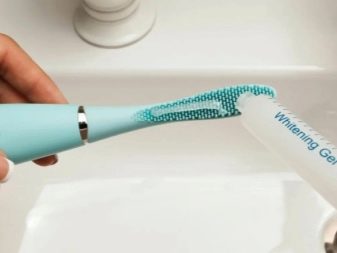

Way of work
The convenience of using the device directly depends on the battery life. That's why do not ignore which energy source the product operates on... Electric brushes are rechargeable and battery-powered.
Rechargeable
To ensure continuous operation, the electric toothbrush has a built-in battery. The set includes a charging base that connects to the AC mains. Rechargeable battery products must be charged before use, the average charging time is 10–20 hours. The charge level is monitored using a special indicator.
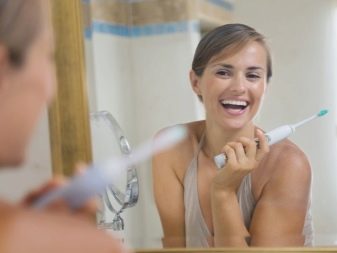

Battery powered
The cheapest models of toothbrushes run on removable batteries. They must be replaced after discharge. The total cost of buying batteries can result in a considerable amount, so the purchase of rechargeable models is considered more practical.


How to choose?
On the market today, you can find many models of electric toothbrushes from a variety of manufacturers. The stores feature American, German, Chinese, Korean and Japanese models. The brushes have different technical and operational characteristics and design.

When choosing the optimal model, it is necessary to take into account many factors that affect the functionality of the electric brush.
- Bristle stiffness... The more flexible the pile, the more efficiently it will clean hard-to-reach areas. But it is important that the bristles remain stiff, otherwise they will not remove plaque and hard deposits efficiently. Therefore, for healthy gums and teeth, a model with medium hard bristles will be optimal.
- Head parameters... The dimensions of the working area are important: the smaller the head of the device, the more opportunities it will open up for the full processing of each individual tooth, interdental space and gingival pocket.The size from 18 to 30 mm is considered universal, the exact parameters are determined taking into account the age of the user. So, for adults, a maximum head size of 30 mm is preferable, and for children, a model with a 20–25 mm head is better.
- Density of the bristles. When choosing an electric brush for children, devices with a number of beams of 20-25 pieces are recommended. When a complete bite change occurs in adolescence, you can switch to models with up to 40 bunches. Adults can take models with 50–55 bundles.
- Operating principle... Different models of brushes provide for variable speed modes and the nature of the movement of the working head. Some nozzles make pulsating movements, others reciprocate. Pulsating ones effectively remove plaque and fight deposits well, but they can injure sensitive enamel and are not recommended for inflamed mucous membranes. Reciprocating movements provide a more gentle cleaning, they will be a good solution for children, elderly users, also for people with sensitive enamel.
- Adjustable pressure... The most modern electric brushes are equipped with a pressure sensor and can independently adjust the speed of the head movement. When there is active pressure on the enamel, such a brush slightly deflects the working area and thereby protects it from injury and damage.


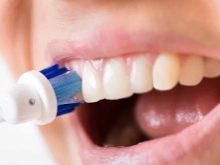
And of course, you should pay attention to design device. So, for adults, a white or black model is suitable. For children, pink, blue, orange and other color samples are preferred.


Popular models
Of the whole variety of dental devices on the market, there are several models that have earned the most positive reviews from users and dentists.
Oral-B Professional Care 700
Oral-B is one of the leading companies in the production of new generation electric brushes. This model has a rounded head, which allows you to clean each tooth one by one. The package includes an additional nozzle with a colored pile - it is a kind of indicator of the quality of the brush wear. As soon as the paint comes off, the nozzle must be replaced. This device produces 9 thousand directional and 20 thousand pulsating movements per minute.



Kolibree V1
The bristles of such a brush perform low-amplitude vibrations - up to 15 thousand movements per minute. The device provides only one operating mode. Nevertheless, it is 100% coping with its main task.
The set includes two spare heads with medium hard bristles. There is a battery, a built-in timer, bluetooth and the ability to connect to a smartphone to collect statistics on the time spent on hygiene procedures and the quality of oral cavity treatment.



Oral-B Smart 6 6000N
Another wireless device from Oral-b for the whole family. It has three round nozzles designed for processing each tooth separately with rotational and translational movements. Whitening attachments are provided.
The device operates in several modes: massage, delicate, standard and whitening. The movements of the head are combined: pulsating up to 48 thousand per minute and directed up to 11 thousand per minute. The kit includes a battery charger, bluetooth with a smartphone and a pressure sensor.


How to use it correctly?
Cleaning the oral cavity with a conventional toothbrush takes 3-5 minutes. Electric ones act much faster - thereby significantly saving the time and effort of the user. However, in order for the procedure to be not only effective, but also safe, it is necessary to disassemble the correct procedure for using the equipment step by step.
First, moisten the brush with water and apply a healing paste - for effective cleaning of the oral cavity, a ball with a diameter of 4–5 mm will be sufficient.
Turn on speed mode. He can be gentle or maximum. Then you can start brushing the outside of your teeth.


The sequence in which the teeth are processed does not matter. You can first clear the upper jaw, and then move to the lower one, or do the opposite - it's not important. Movements should be smooth, 1-2 seconds are allocated for one tooth. The brush is held at a 45 degree angle.
After external cleaning, you can proceed to the processing of the inner side of the teeth. The principle of operation is similar here - the brush is moved with smooth movements from one tooth to another. To clean the front teeth, the brush is turned vertically.
Special attention needs to be paid cleansing chewing teeth. They are more at risk of developing pulpitis and caries. They should be cleaned very carefully on each side. During this treatment, light pressure is allowed on the brush - this will completely clean the interdental space.


After cleansing hard tissue, you can move on to cleaning the gums and tongue. To do this, you can use a special attachment for massaging the gums or perform treatment with the device turned off.
After completing hygiene procedures, you need rinse the attachments thoroughly with running water. Most well-known manufacturers produce special disinfectant cases for their devices - they allow you to completely rid the brush of pathogenic microflora. You need to store the brushes in the bathroom on a stand in a special case - this will significantly extend the life of the device.
When using an electric toothbrush at least once or twice a week, it should be alternated with a traditional toothbrush. Dentists say that this way you will reduce the load on the enamel.


Review overview
User reviews of electric dental appliances are very positive. Their owners claim that the use of such devices greatly simplifies the cleaning procedure and saves time. In the case of correct use, the treatment increases the life of the teeth, makes it possible to significantly improve their condition and appearance.
Considered a great advantage ensuring effective and high-quality oral hygiene at home... The purchase of such a brush eliminates the need for regular visits to the dentist for professional cleaning.
The electric brush will be the best solution for people with motor pathologies and impaired coordination of movements. The mechanism is programmed to perform cleaning movements, and the user does not need to do them himself. At the same time, cleaning does not require any special skills to work with the device.

If you purchase several replaceable attachments, then such a brush can be used as a family one. It is suitable for both children and mature users. The most important thing - choose the right device.
The use of an electric toothbrush, according to buyers, is good prevention of diseases of the oral cavity, inflammation of the hard and soft tissue atrophy. In general, the use of such a brush prevents the development of dental problems and improves the appearance of teeth, and allows comprehensive care for them. However, the procedure has many contraindications, so before buying an electric brush, you must definitely get the recommendations of your attending dentist.



You will learn even more interesting information about electric toothbrushes in the following video.








